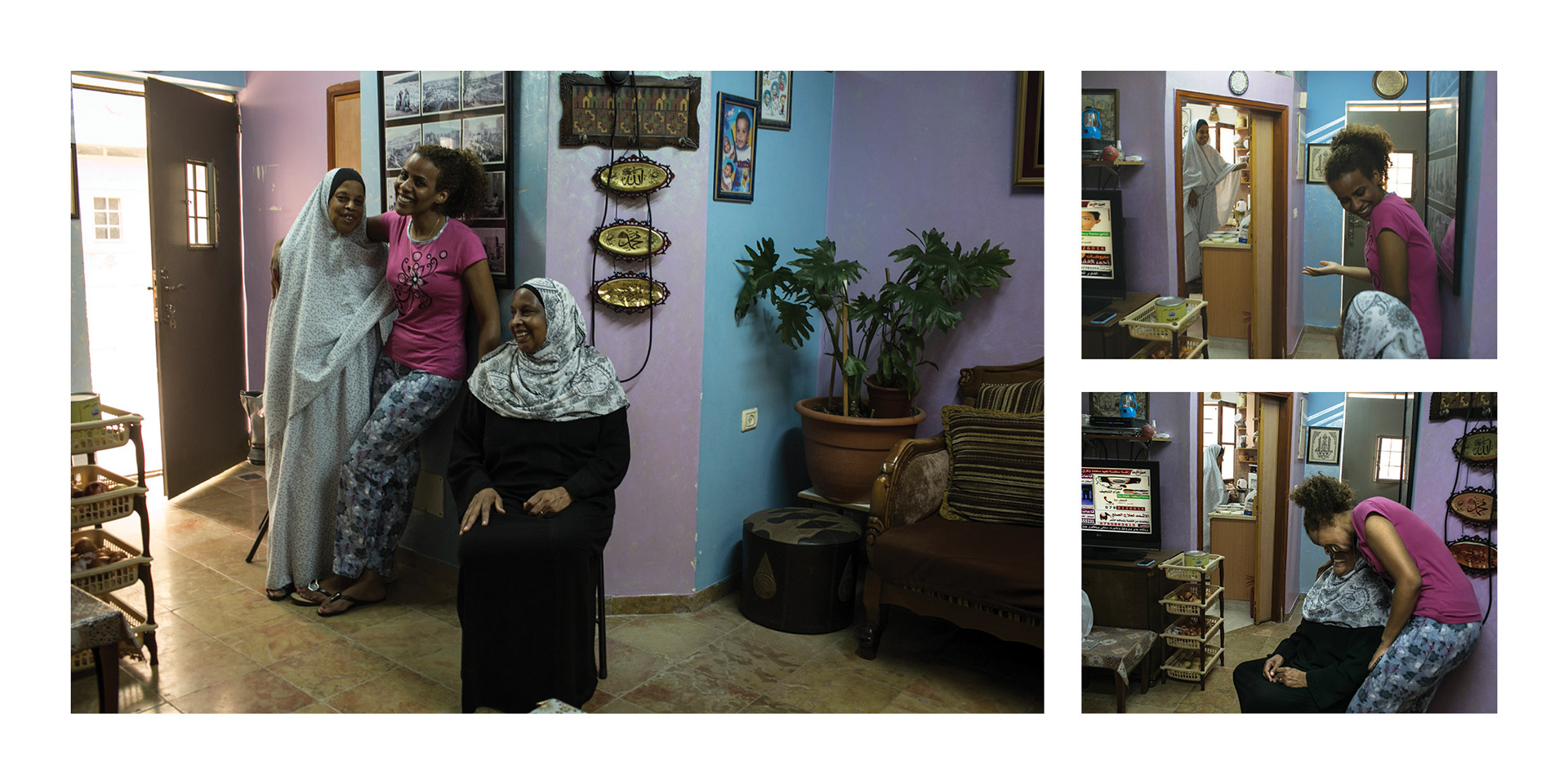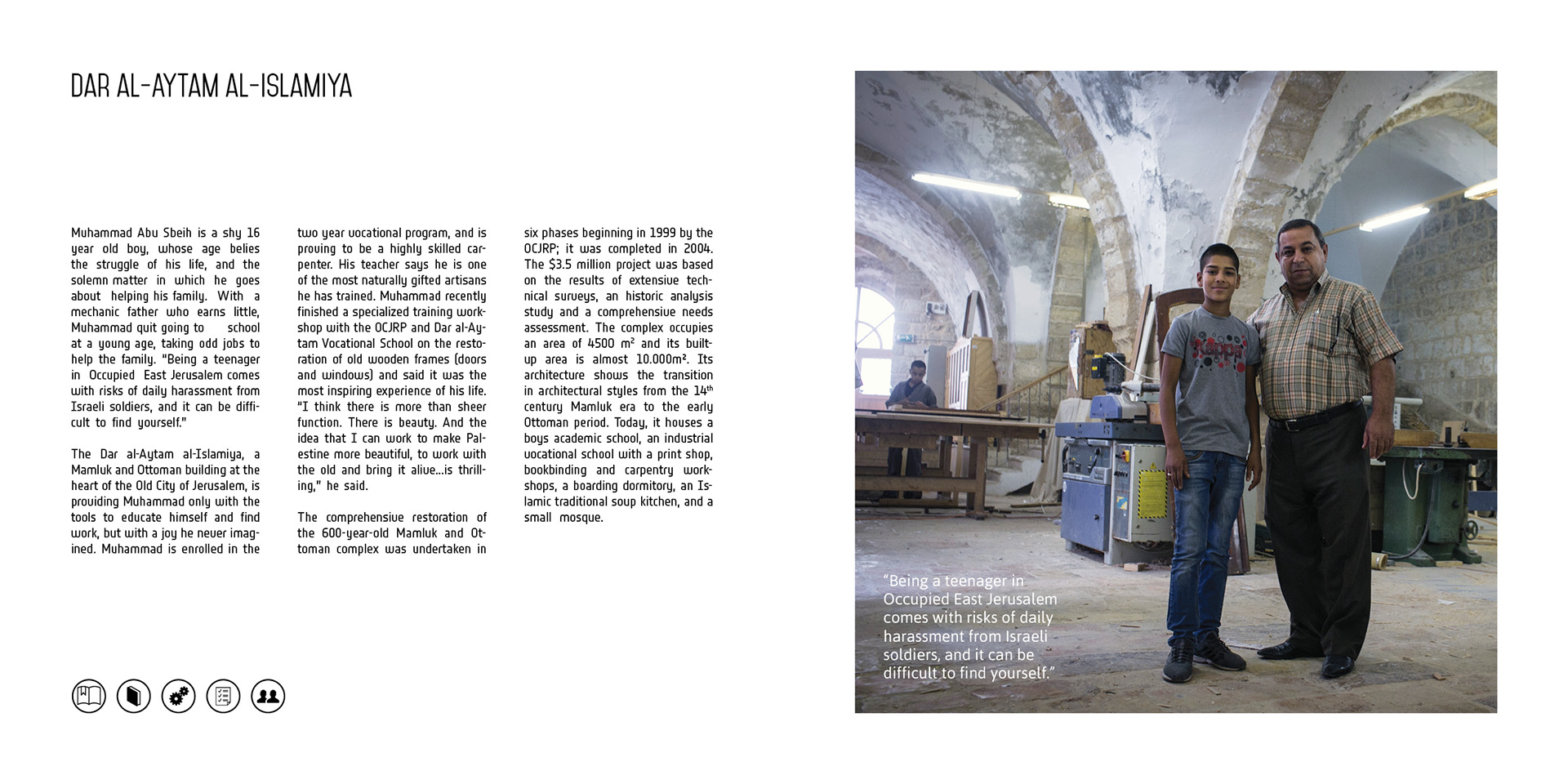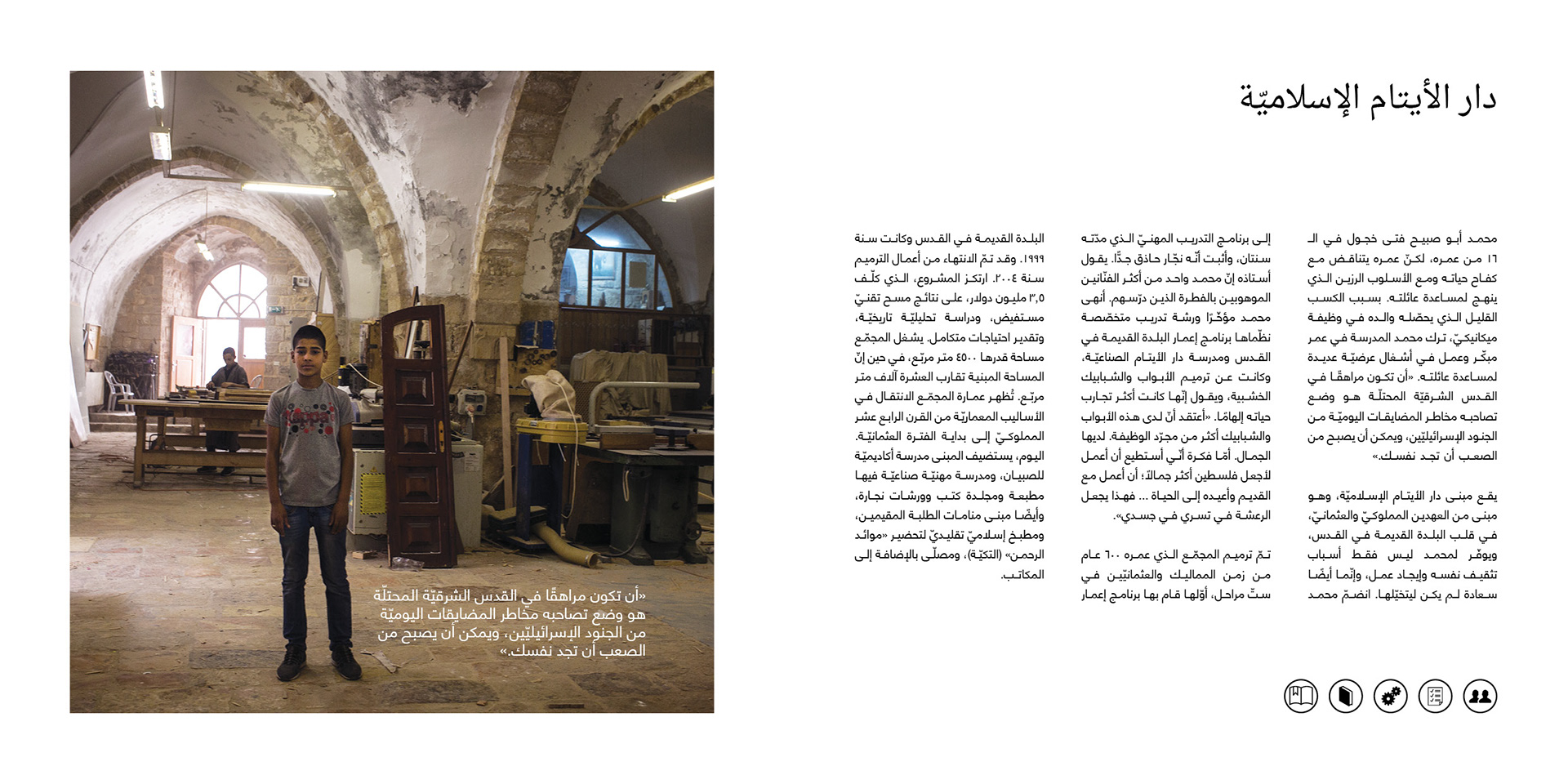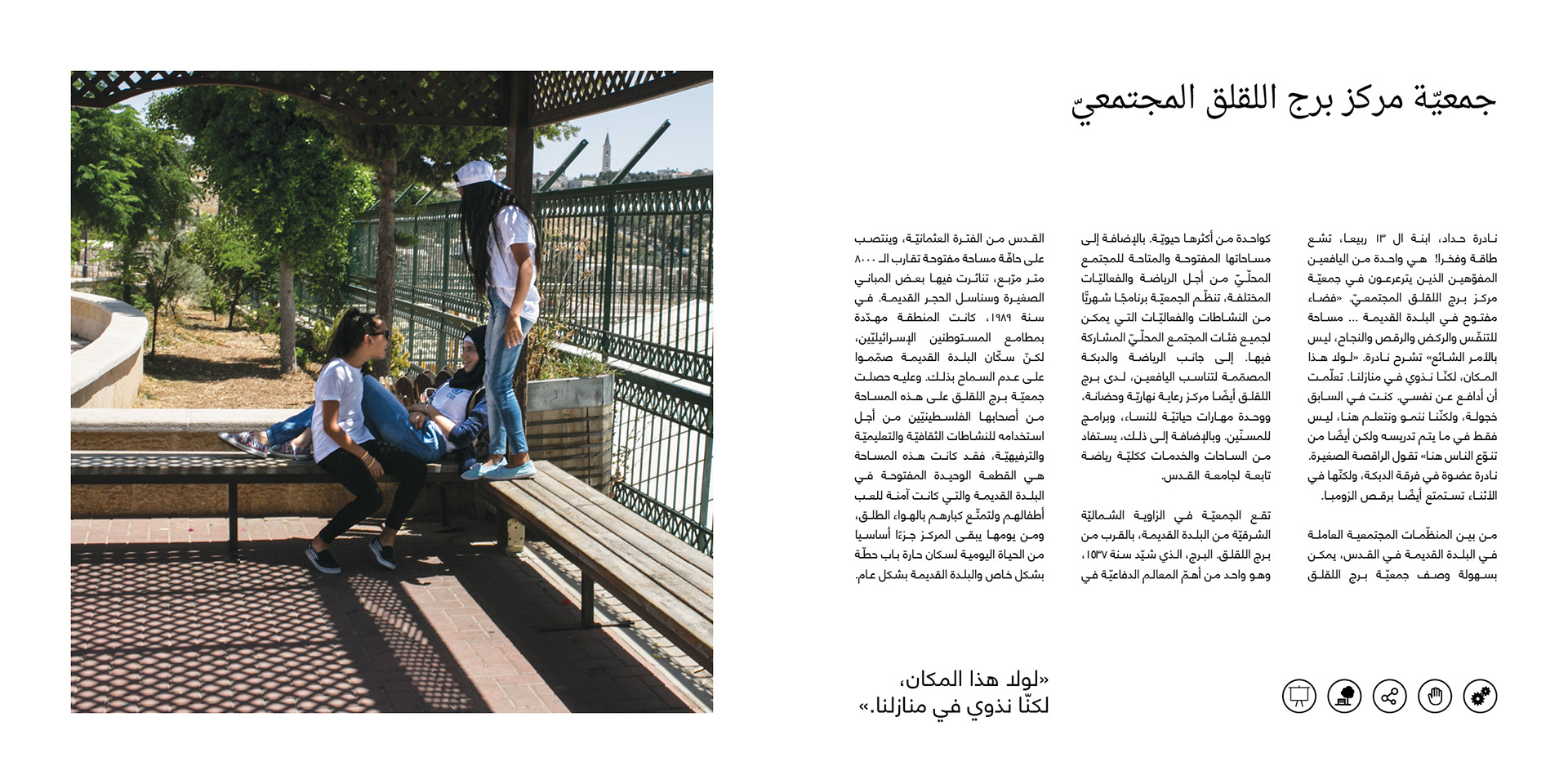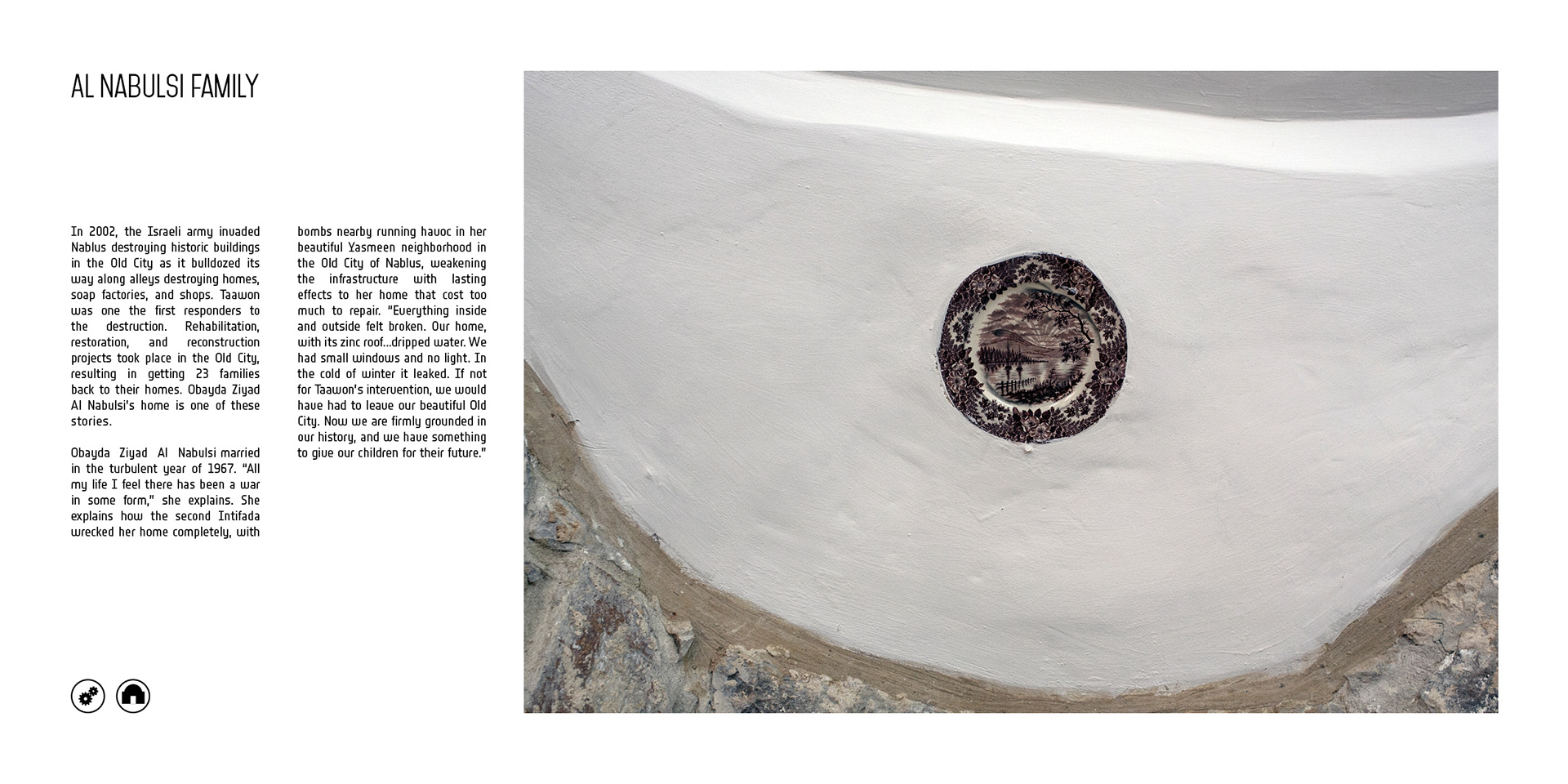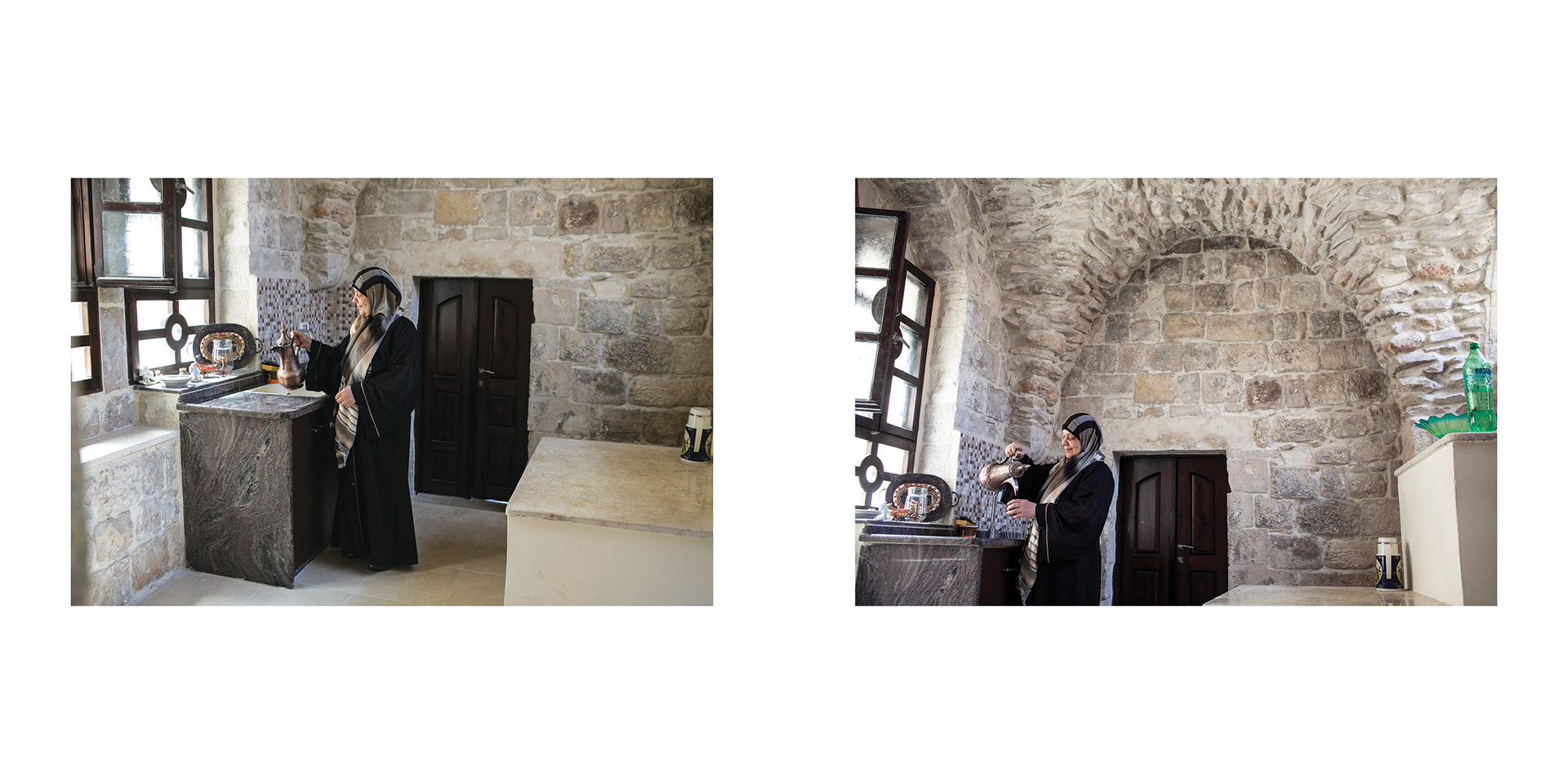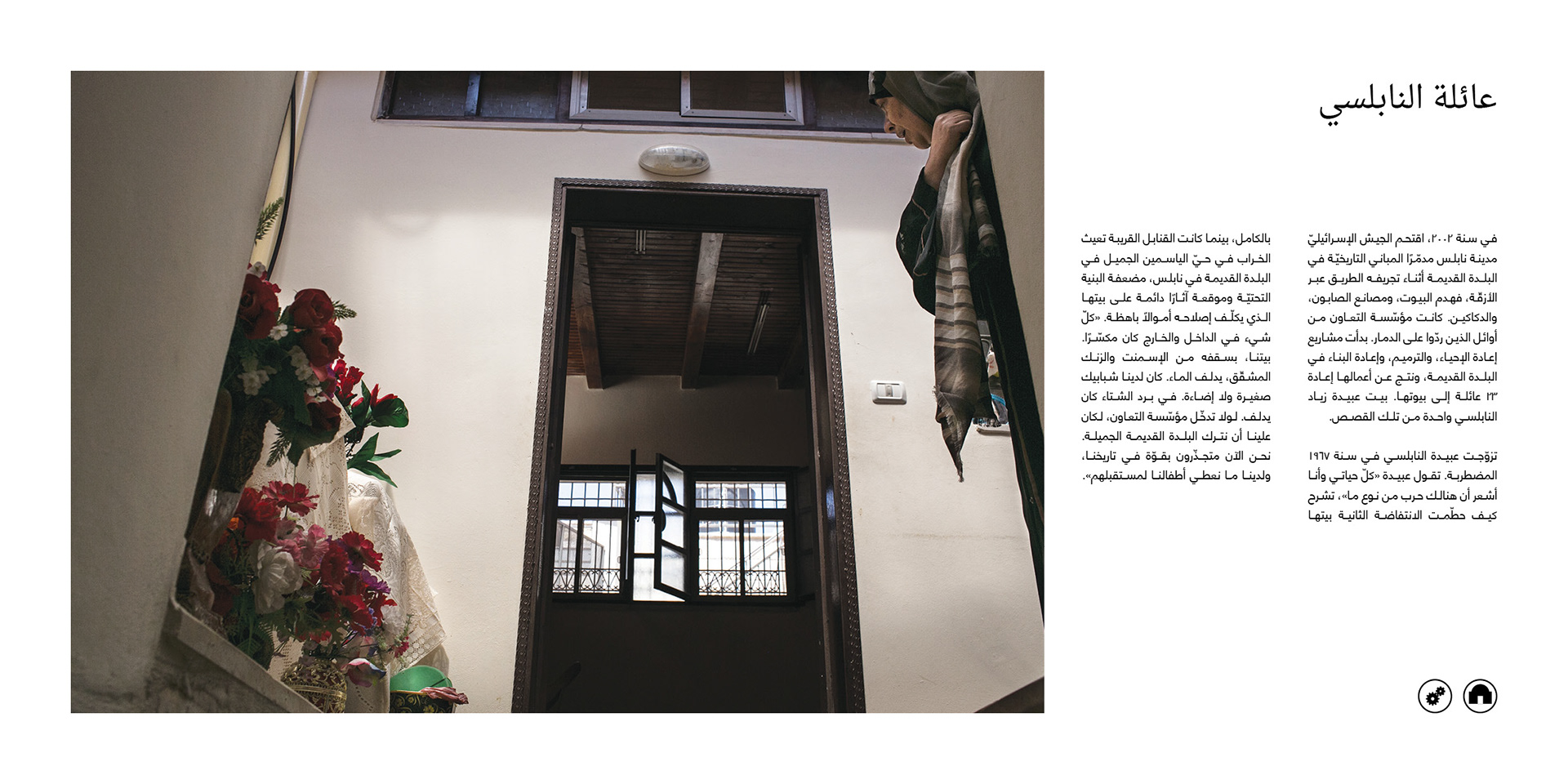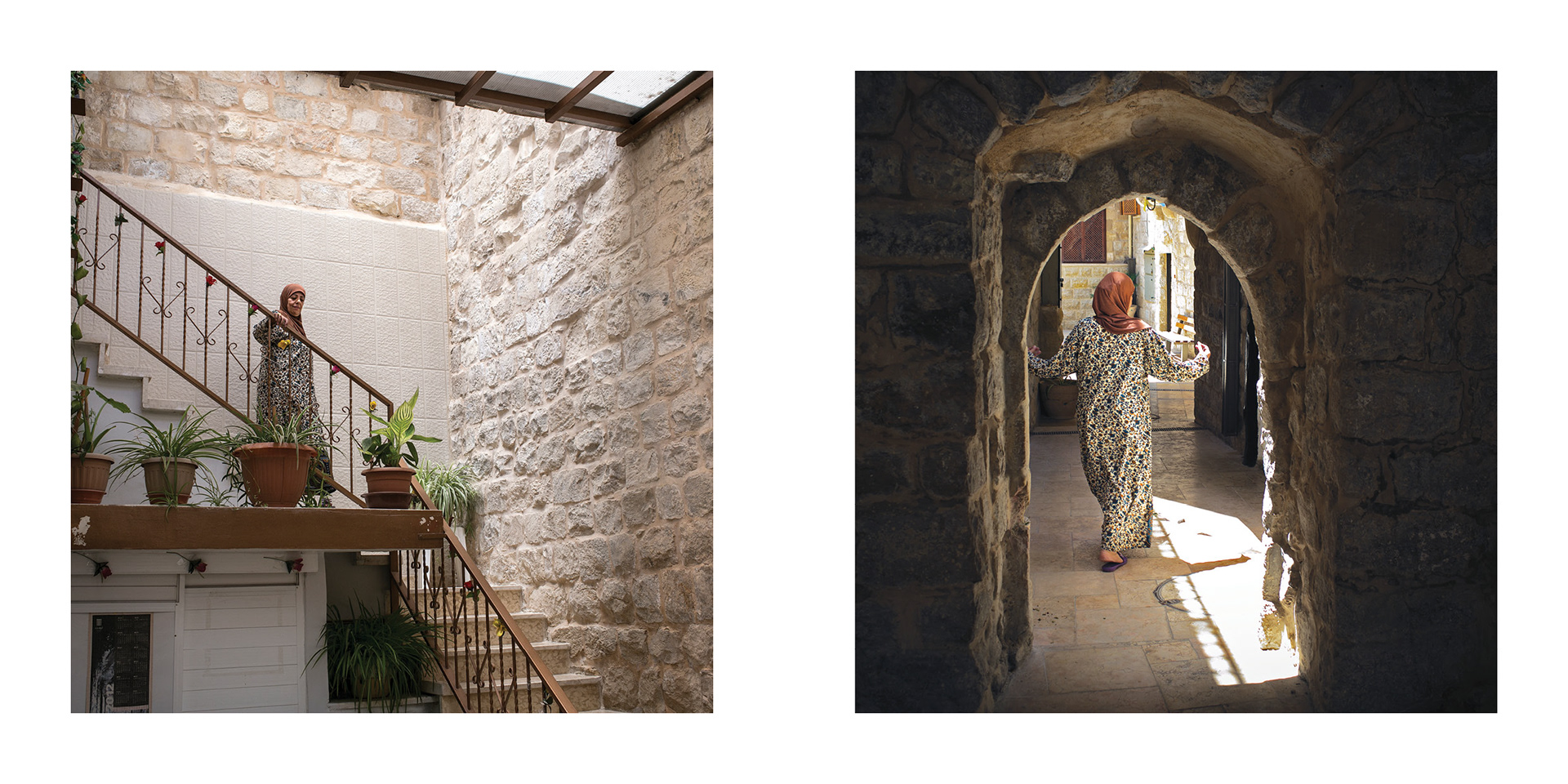11 stories from the Old City of Jerusalem Revitalization Program
Working in the Old City of Jerusalem is simply a dream come true for any architect or specialist in cultural heritage, and Taawon has given us— more than 40 professionals over the years— a unique opportunity to uphold and advance the unparalleled beauty and history of the city and its people. Through a conscious and deep-rooted commitment to making a distinguished contribution toward furthering the progress of the Palestinians, preserving their heritage and identity, and supporting their living culture and building civil society, Taawon established the Old City of Jerusalem Program in 1994. This undertaking mobilized and convened a cadre of resources and people to provide deliberate and sustainable services and solutions to the World Heritage city of Jerusalem and its residents.
As Taawon marked its 10th anniversary in the early 1990s, the local and regional political landscape was changing. Political negotiations were front and center with the emergent Oslo Accords, checkpoints and settler roads were growing exponentially, and tensions became even more palpable as the Israeli occupation strengthened its hold on Jerusalem, which was cut off from the West Bank. Taken together, this challenged the premise of Taawon’s work and prompted the establishment of the Old City of Jerusalem Revitalization Program (OCJRP), which attracted a group of talented and ambitious professionals who were dedicated to safeguarding the heritage and wellbeing of the city.
Over the past 20 years, the OCJRP has established solid roots in the community, and fostered a myriad of relationships with community members, families, and organizations across the region, all of which has helped to further institutionalize the work of the larger agency. Despite the interminable obstacles faced by the OCJRP in an occupied city, including the explicit and latent impacts occupation has had on our communities and heritage, the OCJRP has been successful in reaching out to a diverse constituency through relationships with local organizations such as the Islamic Waqf, different church custodians and parishes, as well as internationally credited organizations like UNESCO and ICCROM. In addition, Taawon established an advisory board for the program, which is comprised of community members and leaders who continuously volunteer their time to support our work.
Since its inception, the OCJRP has contributed to the wellbeing of more than 740 families through home restoration projects, delivered professional training to more than 480 architectural and other practitioners in the field, and provided more than 70 local institutions with safe and healthy spaces to flourish. We have knocked on the door of every single home in the Old City as we continue to develop and deliver innovative services that are responsive to our communities. Taken together, these activities have positioned the OCJRP and its staff as an established and trusted resource for anyone who inhabits or uses historic buildings across the city.
As we reflect upon issues of knowledge accumulation and dissemination, we maintain a detailed database about the historic buildings of the Old City, continue to publish books and informational materials that target both professionals and community members, and work closely with residents to bring out their best as custodians of Jerusalem. By the end of the first decade of our work, the OCJRP published a masterplan for the restoration and development of the Old City of Jerusalem. The plan, which was the first of its kind, set the stage for the coming decade of our work by identifying priorities and targeting specific needs articulated by the Old City of Jerusalem’s resilient community. Documentation, research and publication continue also to play a crucial role in safeguarding our collective memory and legitimizing our presence and history to stand strong in the face of Israeli narratives targeting the elimination of the Palestinian existence in the city’s past, present and future.
Since 1994, the OCJRP has established a strong reputation as a pioneering and multifaceted program with international restoration standards and an unwavering commitment to the security and welfare of Old City residents. We are sought after for our building knowledge, and have developed well-founded partnerships on all levels, while maintaining a strong and reciprocal relationship with those whom we are privileged to serve. It is important to note that the OCJRP received the prestigious Agha Khan Award for Architecture in 2004, an esteemed award that recognizes projects that exemplify excellence in architecture, planning practices, historic preservation, and landscape architecture.
Our proven experience has positioned us to expand our reach to other cities in Palestine using the same approach that was developed in Old City Jerusalem. In 2007, the OCJRP partnered with the municipality of Nablus to preserve and rehabilitate its Old City, and in 2015 we made another partnership with the municipality of Arrabeh (Jenin district) to do the same. The versatile experience accumulated in a complex city like Jerusalem has, in fact, allowed the program to tackle and solve problems faced by the cultural heritage sector in a range of diverse situations across the region. The OCJRP is now looking into reaching out to economically underprivileged, culturally rich communities residing in the larger district of Jerusalem as well as to other urban centers in Palestine, and hopes it can use its knowledge to better serve them.
As we celebrate our accomplishments over the last twenty years, we feel blessed to be part of a program that has invested in its people so heavily. Over the years, the OCJRP has ensured that its staff gain as much knowledge as possible and are exposed to the most recent developments across the fields of restoration and heritage protection. This, in turn, has allowed the OCJRP to remain relevant to the architectural and social development of our city, impart our knowledge and expertise on its infrastructure, and positively impact short and long term program outcomes for residents.
Through the OCJRP, the impacts and achievements of Taawon can be visibly seen and felt as one walks through the old cities of Jerusalem and Nablus. As a program celebrating 20 years of service, we are grateful to Taawon—our parent organization— for the opportunity to engage with and serve our communities. It is a privilege to fortify and protect the architectural, historical, and cultural integrity of our collective spaces, be them simple Ottoman family houses, or extravagant Mamluk schools.
The OCJRP team











